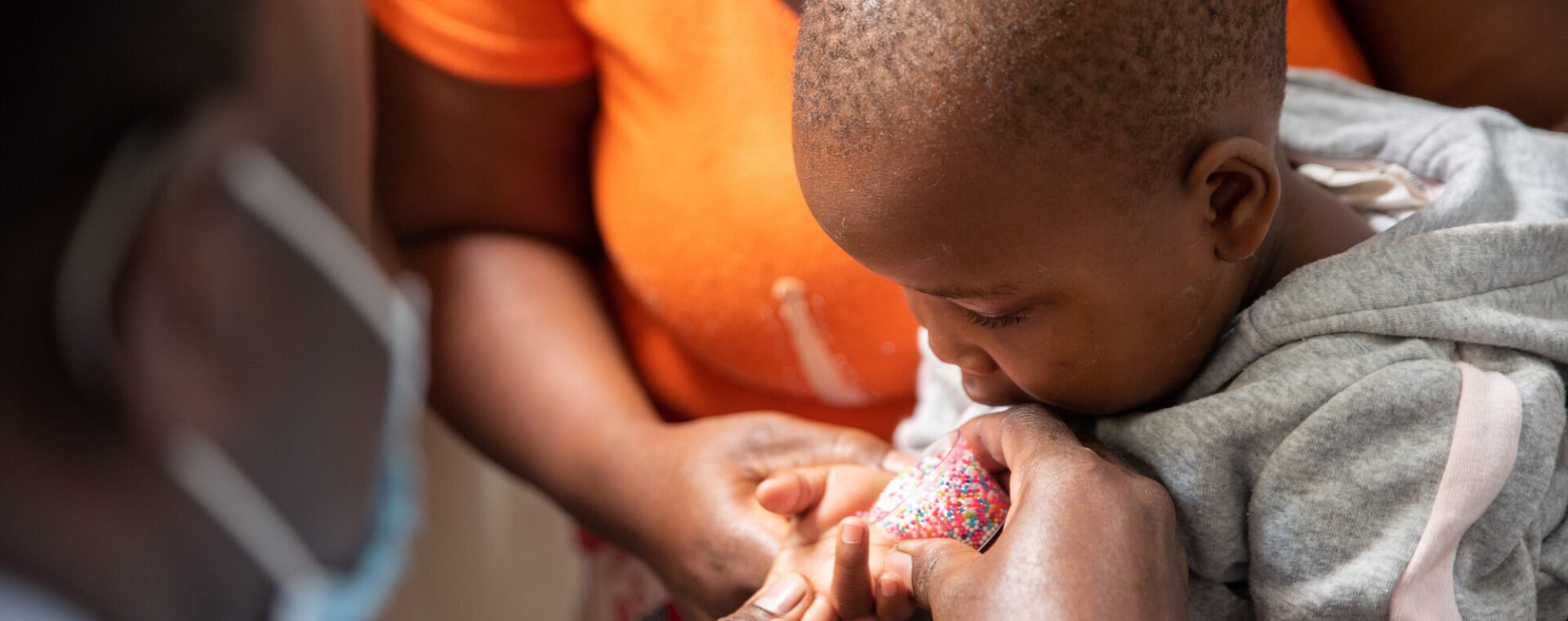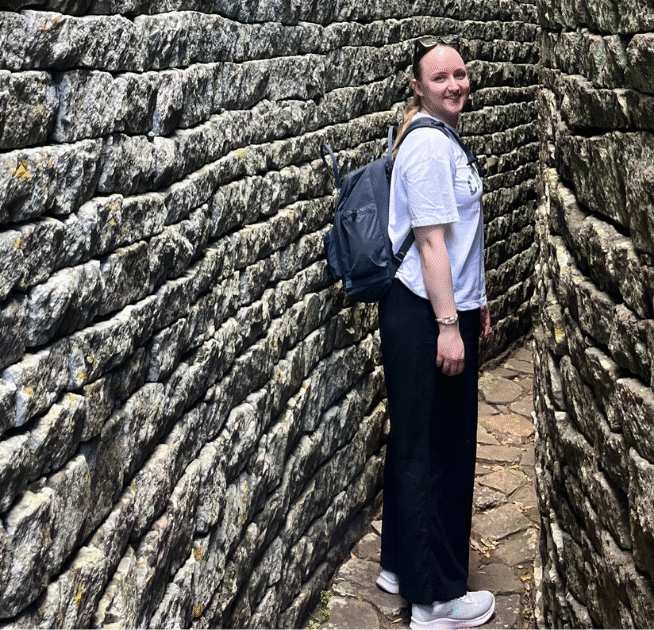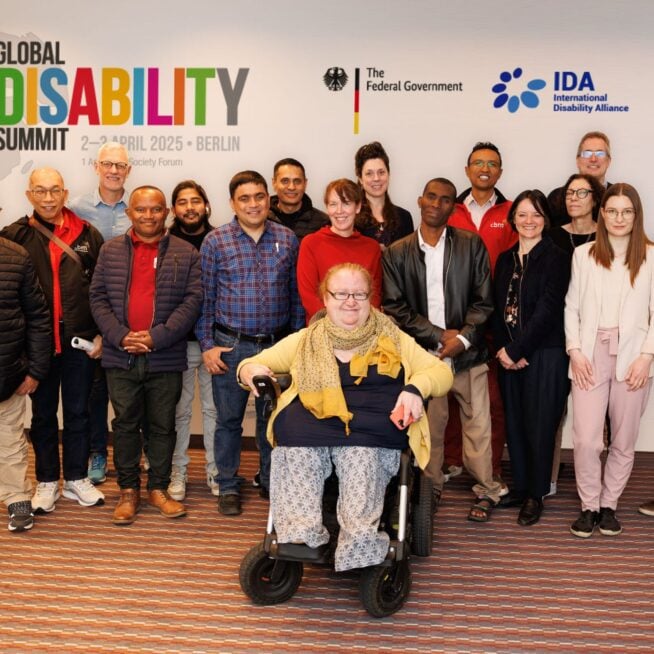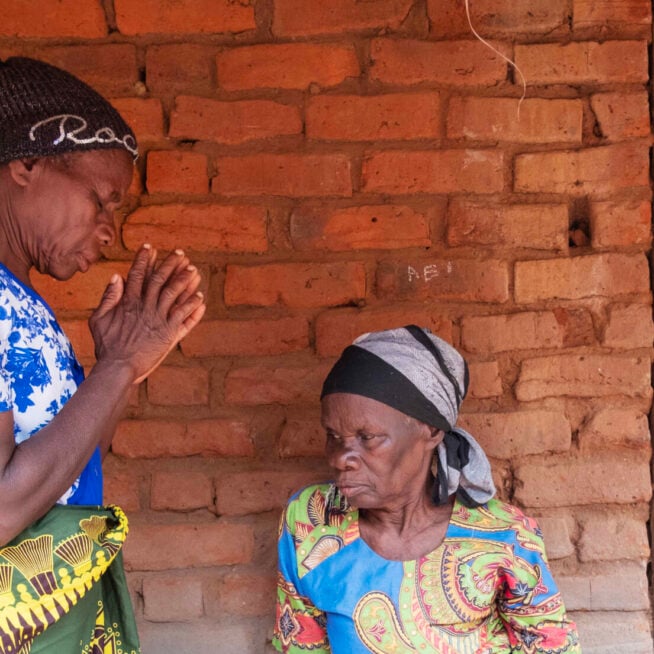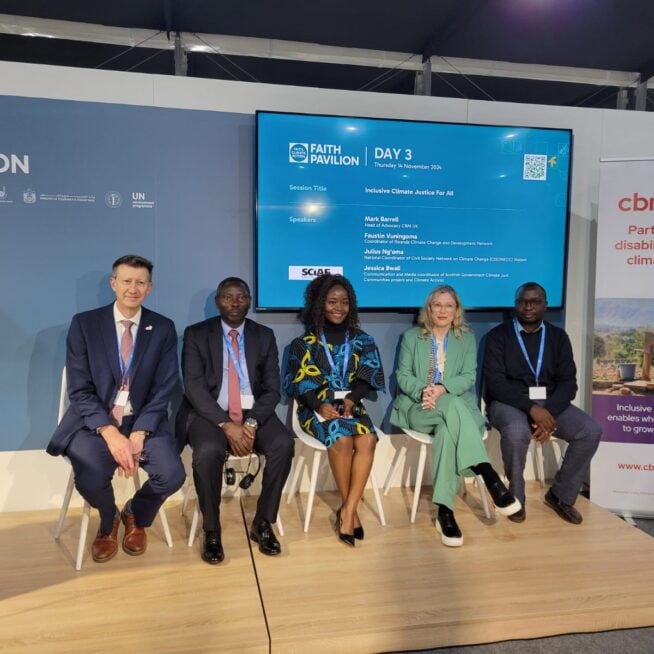Want to transform lives with us? Stay in touch and hear about our news, activities and appeals by email!
Supporting child malnutrition in Kenya: reaching the most vulnerable
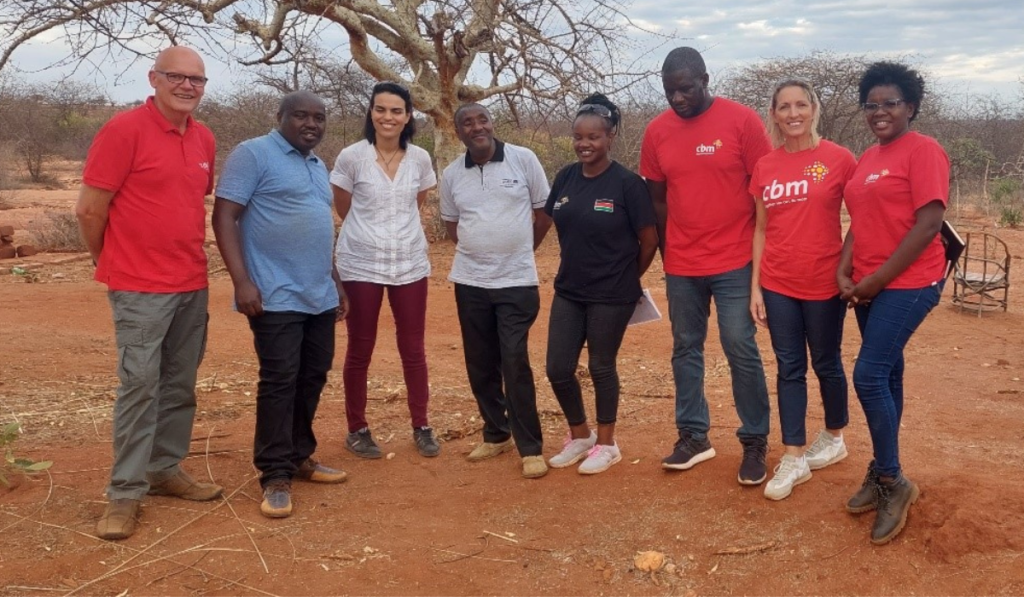
Karen Gallagher is CBM UK’s Trust & Foundations Senior Officer. She recently travelled to Kenya to visit CBM UK’s Child Malnutrition project in Tharaka Nithi county.
In September, I was fortunate to be able to visit our Child Malnutrition project in Kenya with our partner Nous Cims (open link in new tab), who fund this life-changing project to improve child health, maternal health and nutrition in Tharaka Nithi County.
The project is situated in a really hard to reach area of Tharaka Nithi county, approximately 6 hours away from Nairobi.
We left Nairobi on Tuesday morning, to drive to Meru (Meru County), where we stayed the night before travelling to Tharaka Nithi the following morning.
The drive between Nairobi and Meru was fascinating. I was struck by the lavish, agriculturally rich landscape and commercial activity and couldn’t quite comprehend that there was a drought and people going hungry just a matter of hours away.
The roadsides were full of people selling fruits and vegetables and so much of it! The fields either side of the road were full of produce, and it seemed there were areas of one particular fruit or vegetable at a time. Pineapples, oranges, bananas, cassava, tomatoes, lemons, cabbages, you name it, the produce was bountiful. I also noticed tea and coffee plantations, flower farms and other high yielding agricultural businesses, and was once again stunned at how much food was being produced in this area, just a short distance from where people had nothing.
After passing the equator, watching the baboons, and waving to the locals, we arrived in Meru 5 hours later. Meru is a bustling town full of life, people spilling out of shops, children coming home from school, buses, cars and motorbikes covering every inch of the road. Once again, markets selling food were busy and plentiful.
Early the following morning we left Meru and started our drive to Tharaka Nithi. During the day we covered a total of 250km. The first 30km were on tarmacked roads, but then the situation changed. In an instant the tarmac just came to an end and we were on dirt roads, which went on for miles. As we drove further into the county, we left behind all evidence of agriculture and food, and the landscape became more arid with no vegetation. The light coloured earth turned to the orange clay soil of the desert. Dead trees were dotted around in the distance, and the only greenery we saw was a shrub that is evergreen, but is poisonous for goats to graze on, and makes them lose their teeth! We saw evidence of failed crops, where people had been optimistic and waited for the rains but they didn’t come.
Along the bumpy tracks, we came across people walking, alone or with livestock, going to market, or looking for a place for their (very thin) animals to drink water. Schoolchildren appeared from what felt like from nowhere along the tracks, walking to school in their uniforms, with smiles on their faces at seeing our rugged vehicles bumping around their neighbourhood.
Gatunga Health Centre
Eventually we arrived at Gatunga Health Centre where we were meeting the county nutritionist and picking up some weighing and measurement equipment to take to meet the mothers and children.
We then travelled to Gaceuni Health Centre, where the mothers were patiently waiting for us to arrive with their children. As part of the project, this group of mothers come to the health centre every 2 weeks. They have their children weighed and measured, receive food supplements and flour, and report back to each other about their small businesses supported by their savings and loans group.
After introductions, the women showed us their accounting books which record all of the deposits made, the loans given, and profit made in their group, and they shared stories of their successes in the recent weeks. One lady had taken a loan to start a cabbage selling business, and she was doing really well. Collectively, they had managed to save the equivalent of £12 in 3 months. They were so proud and happy with their achievements.
The children were then measured and weighed and the food supplements were distributed.
Elion’s story
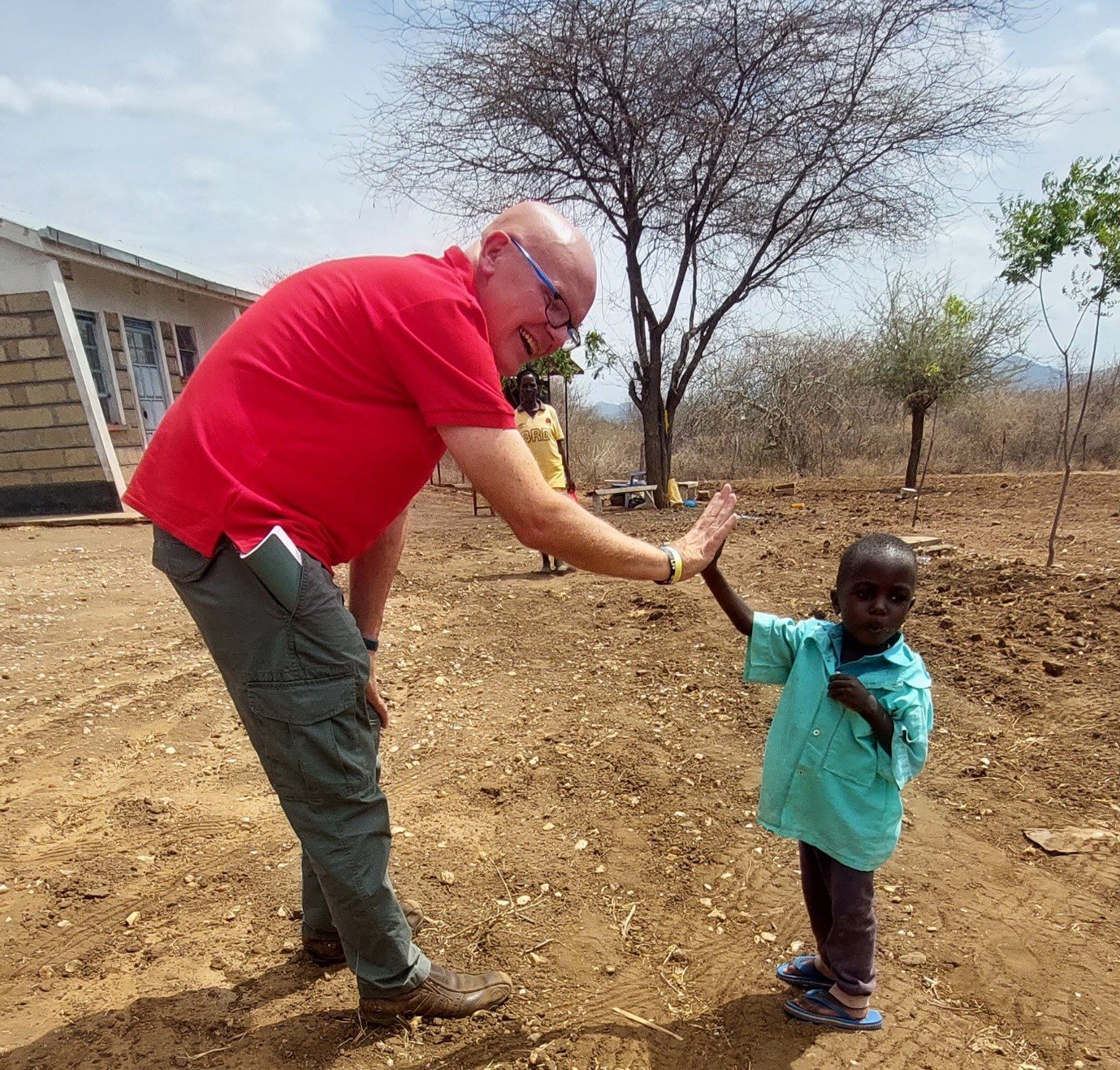 ” />
” />
Image: Elion, a 3 year old boy with severe malnutrition standing with David Taylor from CBM UK.
One little boy, Elion was found to be severe acute malnourished (SAM), and he needed nutritional supplements immediately to prevent his health from deteriorating further. His grandmother was sad and explained that Elion’s mother had died in childbirth leaving Elion and 3 other children orphaned. Elion’s grandmother explained that Elion had never benefitted from being breastfed and she had struggled to feed him. He was given a 2 week supply of Plumpy Nut which is a nutritional supplement packed full of calories and nutrients, and the nutritionist reported a few weeks later that his weight was improving and he was out of danger.
Winnyjoy’s story
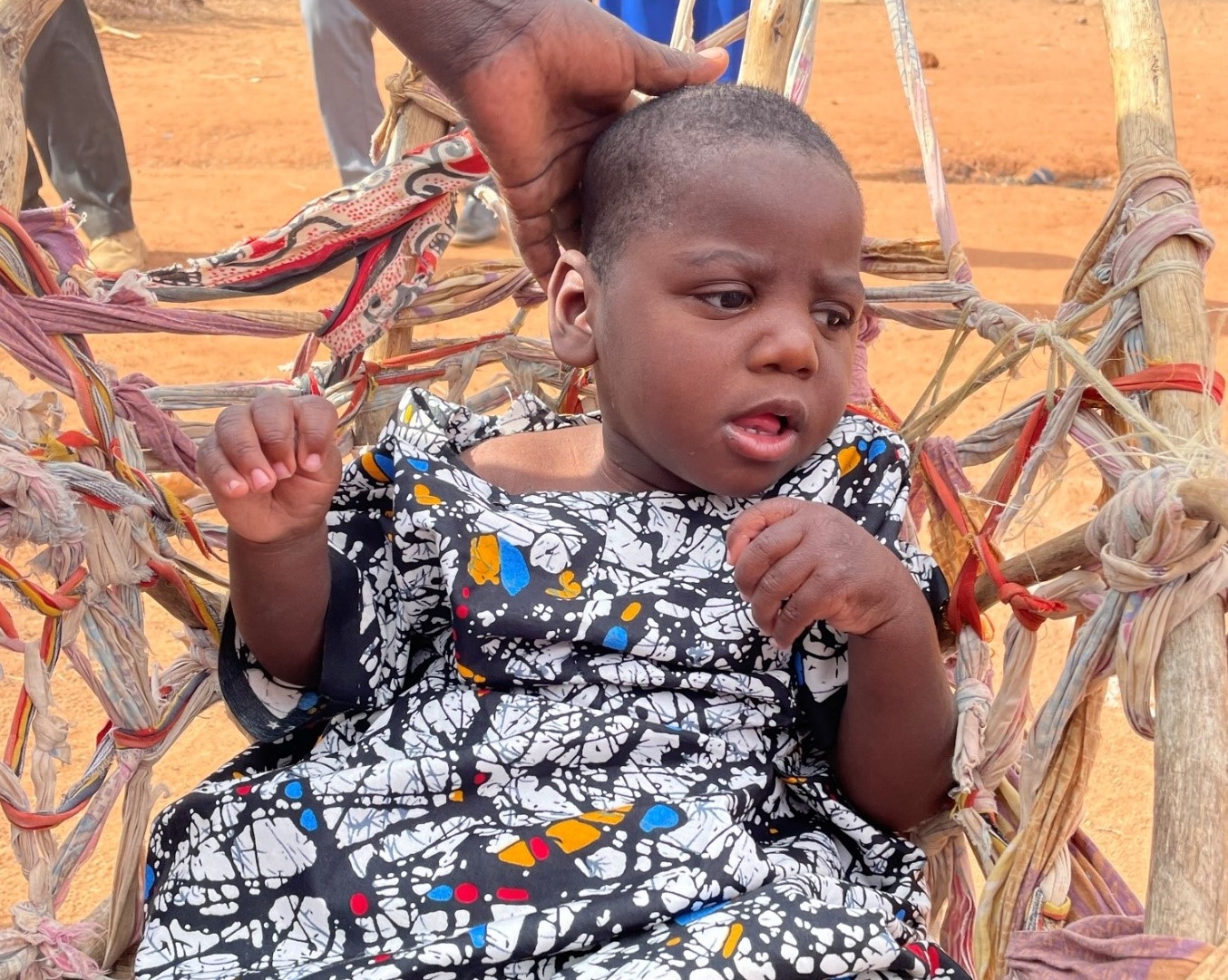
Image: Winnyjoy, a 3 year old girl with cerebral palsy in an adapted chair made by her Dad, using fabric rags to provide support.
Following the visit to Gaceuni, we went to visit a homestead where another mother and baby enrolled in the programme were living. This mother had not been able to enrol in a mother peer support group as she needed to stay home to look after her 3-year-old daughter Winnyjoy, who has cerebral palsy. It dawned on me that without assistive devices, Winnyjoy and her family were going to be trapped where they live, and I wondered about the impact of this on all of them. We were blown away by the partner DOM Spark (Diocese of Meru Service for the Poor in Adaptive Rehabilitation Kinship), who by the end of the day had made arrangements to go back and measure Winnyjoy for a new special chair, so her parents could at least offer her a supportive place to put her down. The grandmother was keen to show us her kitchen garden which consisted of two large growbags with vegetable seedlings growing in them. She had surrounded the garden with sharp shrubbery to protect the vegetables from animals. The training for the kitchen garden was also part of the project. Once the families have got established gardens there will also be cooking demonstrations taking place to teach the women how to prepare nutritious and balanced meals.
We said goodbye to Winnyjoy and her family and began the next leg of the journey to another village to meet another 2 mother peer groups and their children. Unfortunately we had kept them waiting for some time, but they didn’t seem to mind too much and gave us the warmest welcome. As our vehicles entered the village they all stood up and surrounded the trucks and started clapping and singing, all with the biggest smiles on their faces. It was really overwhelming! After a brief introduction and another musical welcome, the groups gathered to learn about the nutritional supplements they were about to receive and how best to feed their children. They listened intently as the community health volunteer and the country nutritionists explained the frequency of the feeding and how to prepare the flour. We were able to chat to some of the mothers as they waited for their turn to receive their food supply and it was lovely to know how the programme was impacting their lives. The savings and loan groups had given them a sense of purpose and the food supplements gave them hope for their children.
One mother talked about the struggles she had had with breastfeeding as only one breast had produced milk which hadn’t been enough for her daughter, who had been born early at just 28 weeks.
Reaching the most vulnerable
The project visit showed how far CBM goes to reach the most vulnerable people. It showed how this project will provide immediate food provision but more importantly skills for mothers to grow and cook vegetables which will provide a diverse and nutritious diet for their children as they grow. It showed how far these resilient people have to go to find water, or to get to the nearest health centres. Some of the women we met at Gaceuni had walked 5km to come to the group. But most of all it showed me how unjust the world can be. That when we enter this world we don’t choose where we are born, we don’t choose to be born into poverty, and yet we all deserve to be able to fulfil our potential and live fulfilling lives. Some people need more support than others and that is OK. The people I met had hope and strength and a sense of dignity that I have never witnessed before. They are eager to learn new skills, and welcome what is offered and welcome advice on how to improve things for themselves and their children. What CBM provides is just a helping hand but it can start transformational change for these communities.
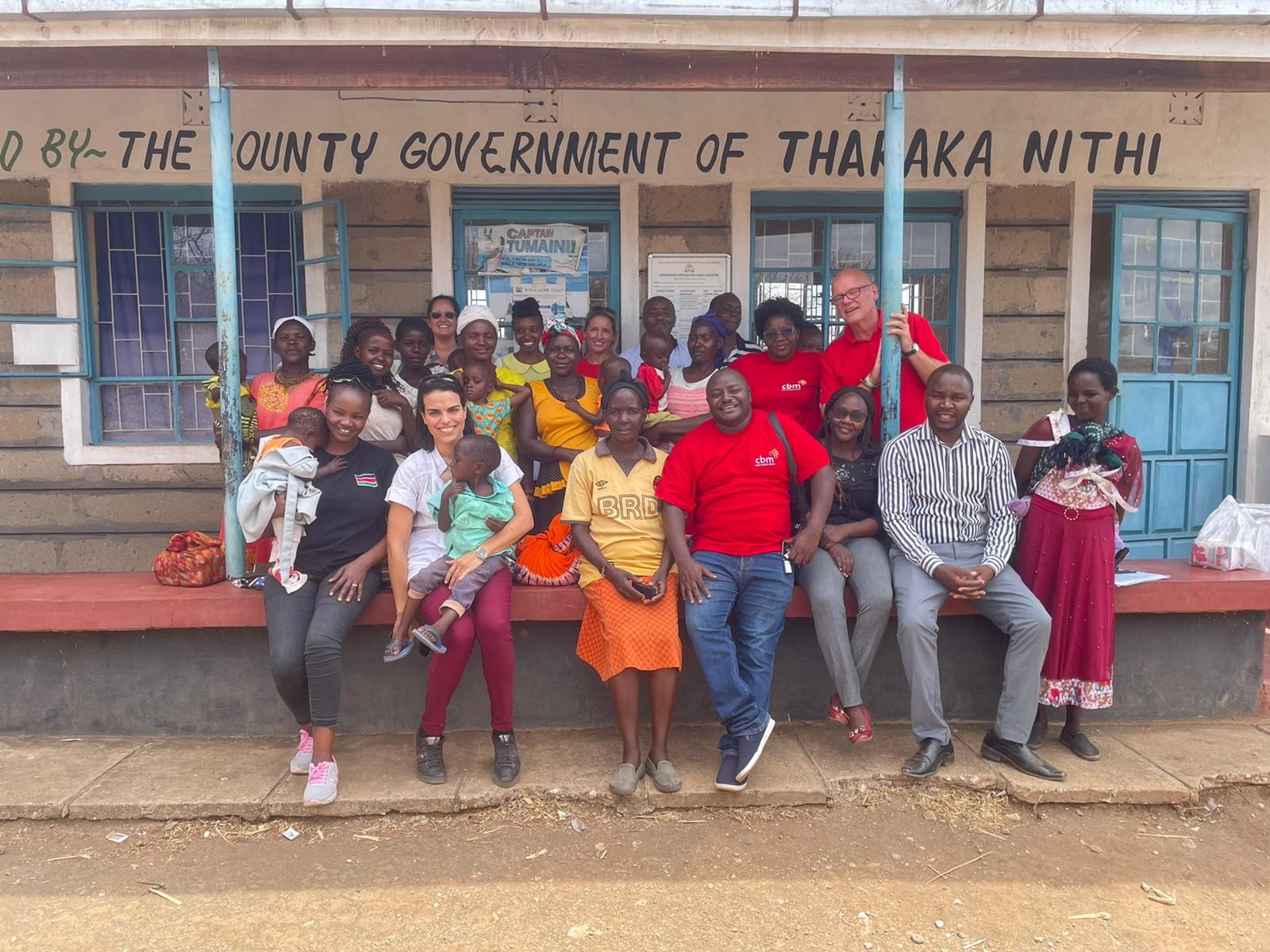
Image: Staff from CBM UK, CBM Kenya, DOM Spark, Nous Cims and the County Nutritionist standing at the Gaceuni health clinic in Tharaka Nithi.
